AMD has made incredible strides over the past few years in both GPU and CPU technology. Despite being the underdog, AMD has managed to go head to head with giants like Intel and NVIDIA in respective departments. And, while their flagship GPU line hasn’t been as competitive against NVIDIA lately, the CPU division has been killing it and has arguably surpassed Intel in terms of offering the best performance for the price.
Today, AMD has made another stride forward to really increase the gap between itself and Intel. Codenamed Vermeer, the Zen 3 architecture promises to deliver leadership performance for desktop CPUs across the board. According to AMD, Zen 3 is the company’s biggest architectural jump in the history of the Zen lineup.
What’s new?
One of the biggest differences is the shift to a single 32 MB L3 cache rather than two 16 MB caches divided across the die. This means that all CPU cores will be able to access the cache at once, significantly reducing latency.
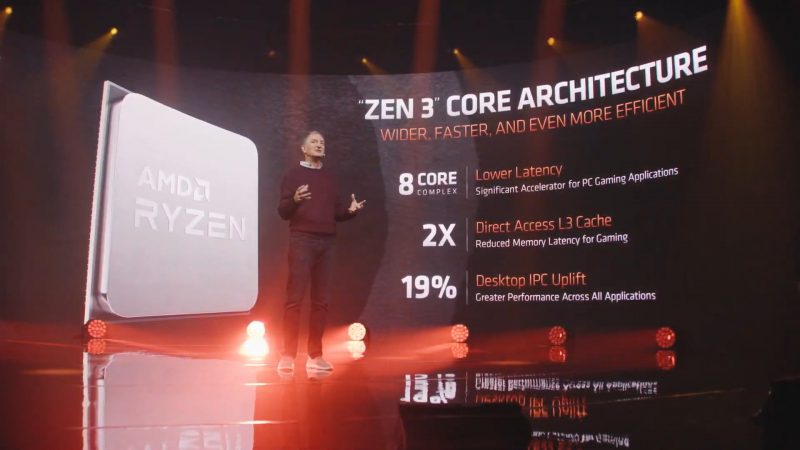
Apart from that, significant IPC improvements have also been made with over 19% performance improvement across all applications. To put things into perspective, this is the greatest IPC jump that AMD has ever made since the original Ryzen launch.
Specifications:
AMD has unveiled a total of four processors, each covering a different segment of the market. However, a rather surprise inclusion in the new enthusiast-level 5950X has thrown a spanner in the works as well. Here are the official specifications for each of the AMD Zen 3 Ryzen 5000 Series desktop CPUs:
AMD Ryzen 9 5950X
This is the enthusiast-level offering from AMD. While most people wouldn’t necessarily go for this option, this is the cutting edge option for those looking to absolutely blaze through everything. The processor comes with a ridiculous core count of 16 accompanied by 32 threads. However, the boost clocks don’t quite hit the Intel level as they max out at 4.9 GHz (which is still an improvement over last-gen).
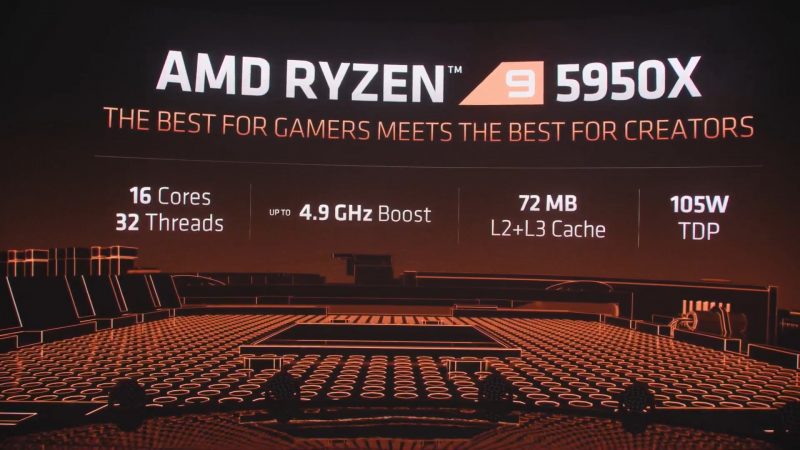
However, arguably the most impressive part about this offering is the humongous 72 MB L2+L3 cache which will be using AMD’s new Zen 3 design resulting in lower latency. And, to cap it all off, the TDP for this beast is around 105W, which, while being quite high, is still significantly lower than the Intel 10900K. The Ryzen 9 5950X is priced at $700 USD.
AMD Ryzen 9 5900X
The flagship Ryzen 5000 series processor is the AMD Ryzen 9 5900X. AMD has focused on single-core performance this time around. This has led to the 5900X breaking single-core benchmark records for non-enthusiast CPUs, making it one of the most viable options for hardcore gamers.
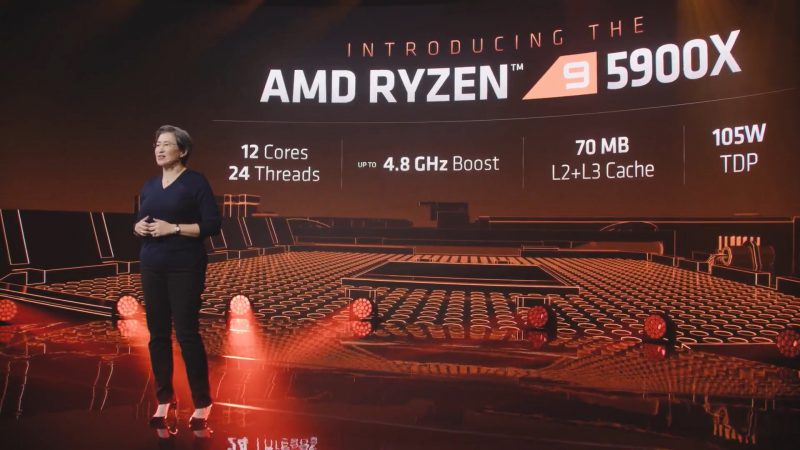
The processor, as expected, comes with 12 Cores and 24 Threads. It runs at boost clock speeds of up to 4.8 GHz and is rated at a TDP of 105W, which is the same as its bigger brother 5950X. However, the L2+L3 cache is slightly reduced down from 72 MB to 70 MB.
In terms of real-life gaming performance, you can see an average performance gain of around 26% which is pretty decent. Here are all the numbers and performance comparisons for different games running on a Ryzen 5900X as compared to last-gen:

AMD Ryzen 7 5800X and Ryzen 5 5600X
AMD did not go much into the detail of the lower-tiered CPUs Ryzen 7 5800X and Ryzen 5 5600X. However, we can expect these to be the best sellers when they arrive on the market. AMD has a history of providing incredible value for your money and it seems like this trend will continue with the Ryzen 5000 series as well.
First up is the Ryzen 7 5800X which offers 8 Cores and 16 Threads running at a Base and Boost Clocks of 3.8 GHz and 4.7 GHz respectively. These processors will be using the same single block L3 cache but the combined total of L2+L3 comes down to a modest 36 MB. However, the rated TDP remains the same as the flagship processors at 105W.
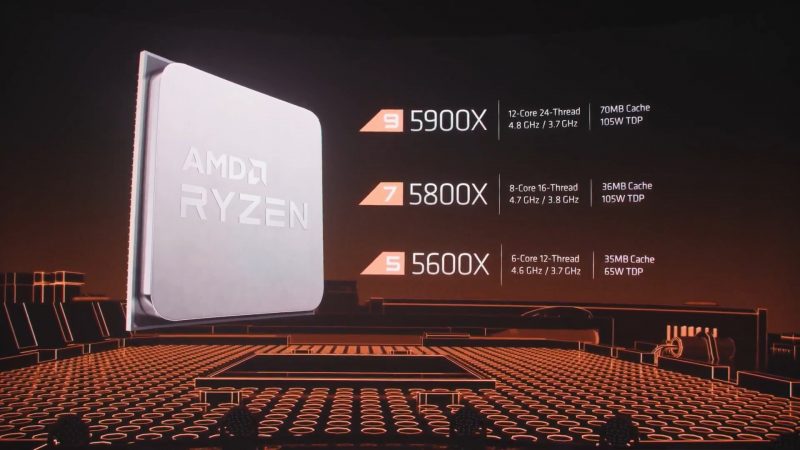
The final piece of the Ryzen 5000 puzzle is the Ryzen 5 5600X, which is arguably the most compelling offering out of the bunch. It sports 6 Cores with 12 Threads and runs at a Base and Boost Clock of 3.7 GHz and 4.6 GHz respectively. The cache division is presumably similar to the Ryzen 7 5800X with the total L2+L3 cluster being 35MB. Having said that, the TDP comes down significantly to 65W which is pretty good for budget builds.
Pricing:
In terms of pricing, AMD hasn’t really undercut Intel massively for the flagship offerings. However, the Ryzen 5 5600X is priced incredibly low which should make Intel sweat a little. Across the board though, the pricing of the Zen 3 Ryzen 5000 lineup seems very compelling and should offer incredible value for gamers whether they’re looking to game on a budget or want to go all out with their rigs.
Here is the official pricing for the AMD Ryzen 5000 lineup:
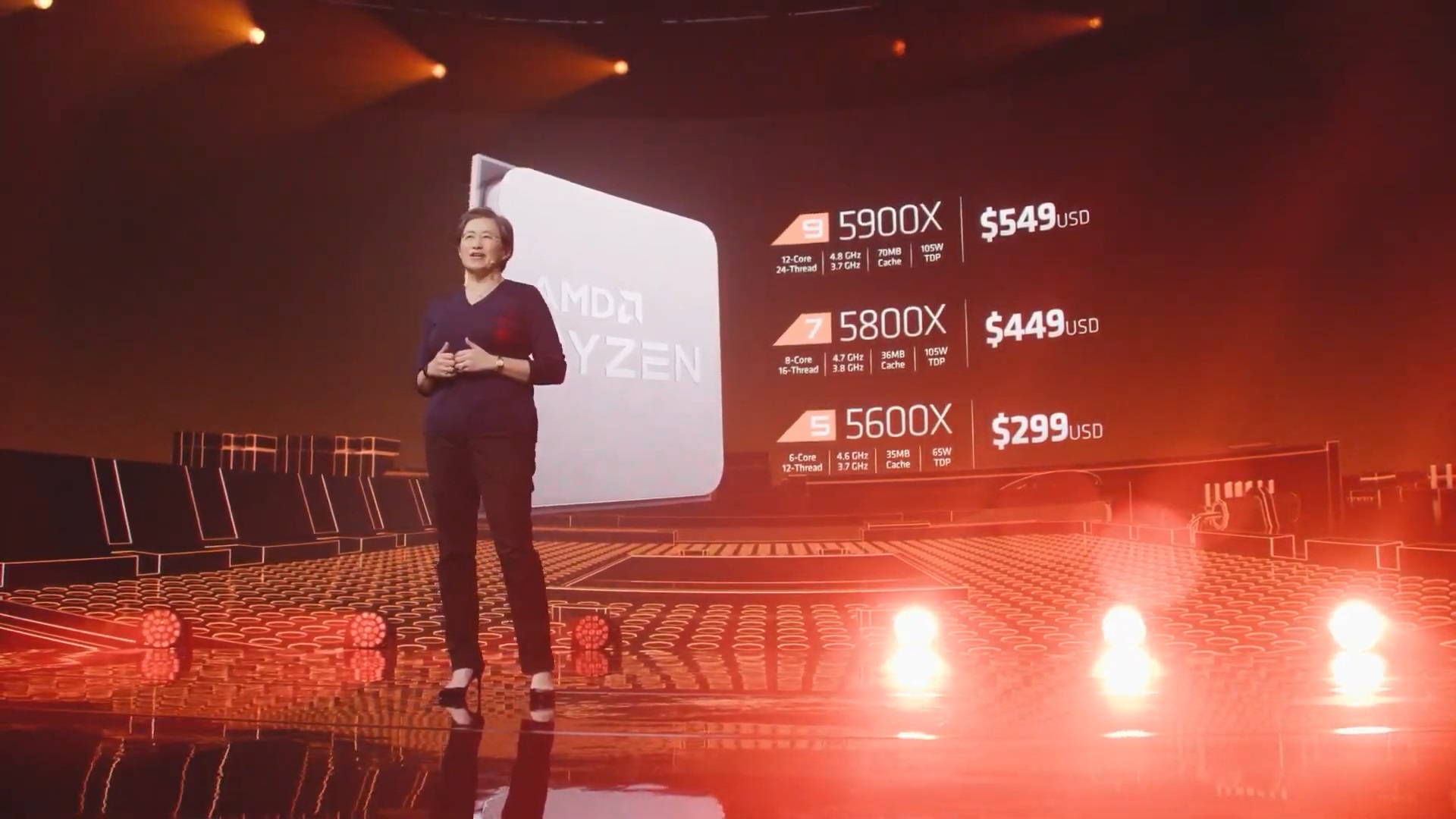
We can expect these processors to launch on November 5, 2020, which is just a week before the next-gen consoles also roll out.
AMD teases Radeon RX 6000 Series BIG NAVI GPU:
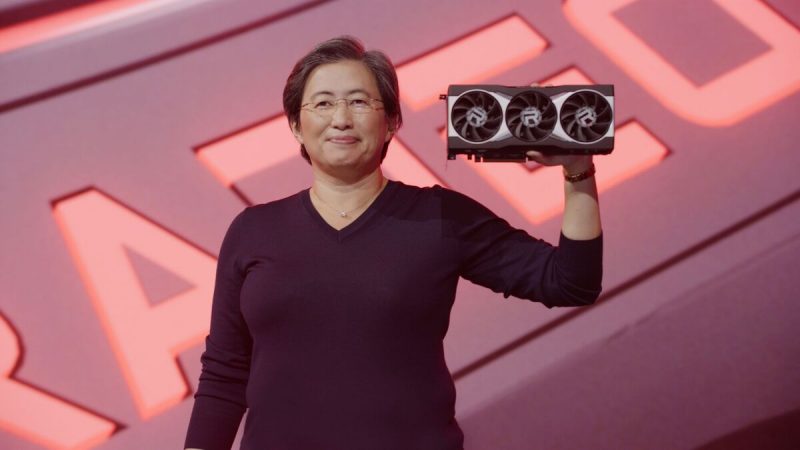
Processors weren’t the only thing that AMD showed at its event though. In a surprise announcement, AMD also brought out its much-anticipated Big NAVI Radeon RX 6000 series GPU, which will presumably rival the NVIDIA RTX 30 series. And, while there weren’t many details shared at this particular event, AMD did show some benchmarks for the new graphics card.
According to AMD’s benchmarks, the Radeon RX 6000 card should be able to run most games at 4K with some very decent framerates. The presentation included benchmarks from Borderlands, Modern Warfare, and Gears 5, all running well over the 60 FPS mark at max settings in 4K.
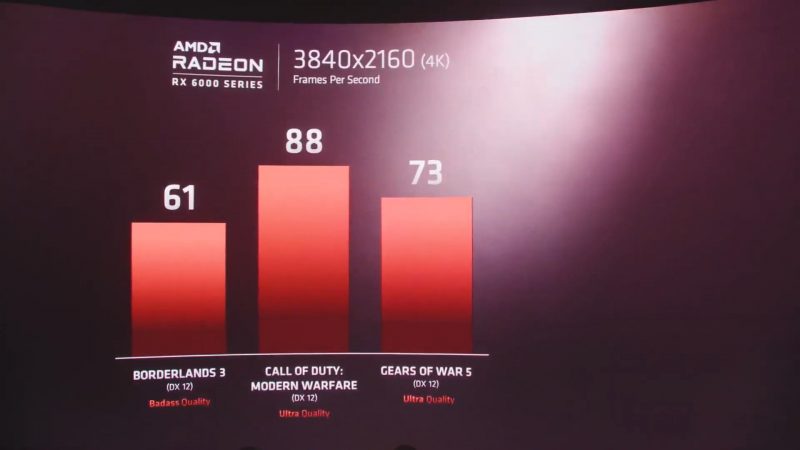
However, if you were expecting these cards to blow NVIDIA out of the water, you might be in for a disappointment. It would be interesting though to see how AMD prices these cards in comparison to the incredibly priced NVIDIA GeForce RTX 30 series.
What do you think of the AMD’s Zen 3 Ryzen 5000 lineup? Can Intel compete? Let us know down in the comments below!


